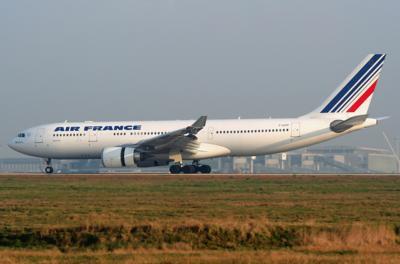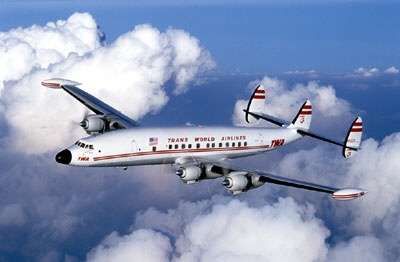The Short Road from Reductionism to Peril
In a working paper filed with the aviation standards body, the European Union Aviation Safety Agency (EASA) requested on behalf of its member states that the "necessary enablers" be created "for a safe and globally harmonized introduction of Part 121 operations of large, transport category aircraft by single pilots. EASA puts forth—albeit tacitly—that Single Pilot Operations (SPO) afford air-travelers a degree of safety equivalent to or surpassing that typical of current air-carrier operations.

Concomitantly, over forty countries, including Germany, the UK, and New Zealand, have petitioned the United Nations body that sets aviation standards to help make Single Pilot Operations (SPO) a reality.
EASA asserts SPO air-service could commence as early as 2027.
Proponents of SPO vociferously maintain that commercial aviation, most often, is a non-emergent business. They posit that 999 out of every one-thousand flights comprise primarily convention and boredom, and that under such circumstances modern automation affords a competent PIC all the assistance required to safely operate even the largest, most sophisticated airliner. Except it doesn’t.
Captain Tony Lucas, an Airbus A330 PIC for Qantas Airways Ltd. and president of the Australian & International Pilots Association, is concerned that a lone pilot may well find himself overwhelmed by an emergency before anyone else has time to reach the cockpit to help.
Captain Lucas’s assertion is substantiated by the events that transpired aboard Air France Flight 447 as it made its way to Paris from Rio de Janeiro on 01 June 2009. Enroute over the Atlantic Ocean at FL350 with the flight’s PIC resting in the cabin, the two flying pilots began receiving faulty airspeed indications—likely attributable to ice crystals forming in the aircraft’s pitot tubes. In the ninety-seconds it took the PIC to realize the flight was in peril and return to the cockpit, the aircraft entered a stall from which it never recovered. Minutes later, the Airbus A330 impacted the water, killing every one of its 228 passengers.

“The people going down this route aren’t the people who fly jets every day,” Captain Lucas insightfully remarked. “When things go awry, they go awry fairly quickly.”
A check airman and training captain, Lucas decries the inevitable loss of opportunities to mentor junior pilots all but ensured by the implementation of SPO.
Captain Lucas’s sentiments are echoed by the International Federation of Air Line Pilots’ Associations, which in an October 2022 report to the ICAO stated that no arrangement to date has proved safer than a second, rested, qualified, well-trained pilot physically present on the flight deck.
Notwithstanding vehement urgings to the contrary by pilots and pilots’ unions, the International Coordinating Council of Aerospace Industries Associations, which represents plane-makers worldwide, is currently urging the ICAO to devise a roadmap for flights with one pilot at the controls during non-critical periods.
Airbus, too, is assessing protocols by which its aircraft might be flown by smaller crews. The consortium is actively collaborating with airlines and regulators for purpose of determining whether two pilots can replace three-person crews on long-haul flights.
Furthermore, in an instance of distressing neo-Iscariotism, a pilot for Shanghai-based China Eastern Airlines—which suffered a fatal accident in March—co-authored a research paper assessing means by which takeoff and landing tasks might be automated or completed with help from a ground station.
It took five, highly-trained, reasonably well paid crew-members to operate the airliners of the 1950s. The flight-decks of Boeing Stratocruisers and Lockheed Constellations bustled with the combined efforts and expertise of two pilots, a flight engineer, a navigator, and a radio operator—each working diligently to keep the stately machines aloft, running smoothly, on course, and in touch with a largely non-radar ATC system. Improvements in navigation and communication technology in the 1960s occasioned the extinction of navigators and radiomen. Newer aircraft like Boeing’s 727 and Douglas’s DC-8 got on with three-man crews comprising a pair of pilots and a flight engineer. The advents of digital technology and computer automation heralded the departure of the flight engineer, and by the 1980s, aircraft like Boeing’s 757 and 767 had been certified for two-pilot operation. This reduction in aircrew members was a boon to the airlines insomuch as pilot compensation can account for
up to twenty-five-percent of an air-carrier’s direct operating expenses. Why pay five crewmen to move 100 passengers aboard a Constellation when you can pay three aviators to move 150 passengers aboard a 727? And why pay a trio of 727 drivers at all when you can pay two pilots to move 467 passengers aboard a 747-8?

Seventy-years of precedent point unerringly to the airlines’ hankering for SPO—if not its imminence. And why not? Fighter and reconnaissance aircraft have traditionally been manned by single pilots. The frequency with which Raptors and Typhoons take to the air, and the grueling duration of U2 and SR-71 missions suggest single pilots can stand a great deal more terror and tedium than they’re likely to ever see in Part 121 or 135 gigs. Nevertheless, what a man can hack in combat and what he chooses to endure in a civilian profession are two very different things.
The human being is a complex construct. To function optimally, man requires a delicate, infinitely variable balance of concentration and companionship. He must perceive his environment, identify and prioritize the challenges therein, devise resolutions to subject challenges, then act decisively. A single pilot proceeding from perception to action ultimately acts on an opinion. Two pilots proceeding together from perception to action ultimately act on a consensus. Notwithstanding sophistication and redundancy, automation makes for cold company. When things go weird, a human being cannot look across a cockpit—at a pile of servos slaved to a computer—and ask, “What do you make of that?”
Psychologists and fools, most of whom have never logged a single flight-hour—drone on about the sticky aspects of human interpersonal relationships. They cite man’s mercurial nature and warn of the adverse effects emotion has on his performance. Man, they contend, is fallible, and must be watched over in perpetuity by infallible machines. There’s no denying man’s inconstancy. Mutability is the price of sentience. Machines, conversely, are invariable—provided they operate within parameters predetermined by their fallible, human makers. Confronted with the unexpected or unfamiliar, machines fail utterly. As of yet, machines cannot learn—not correlatively anyway, and certainly not on the fly. Abstractions such as inference, interpolation, reasoning, and reckoning remain the sole province of human beings.
 ANN's Daily Aero-Term (04.30.24): Runway Centerline Lighting
ANN's Daily Aero-Term (04.30.24): Runway Centerline Lighting ANN's Daily Aero-Linx (04.30.24)
ANN's Daily Aero-Linx (04.30.24) Airborne 04.24.24: INTEGRAL E, Elixir USA, M700 RVSM
Airborne 04.24.24: INTEGRAL E, Elixir USA, M700 RVSM Airborne 04.29.24: EAA B-25 Rides, Textron 2024, G700 Deliveries
Airborne 04.29.24: EAA B-25 Rides, Textron 2024, G700 Deliveries Airborne-NextGen 04.23.24: UAVOS UVH 170, magni650 Engine, World eVTOL Directory
Airborne-NextGen 04.23.24: UAVOS UVH 170, magni650 Engine, World eVTOL Directory





